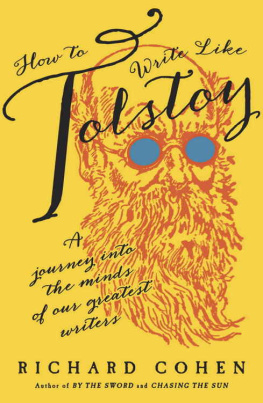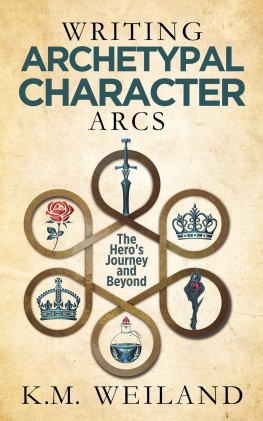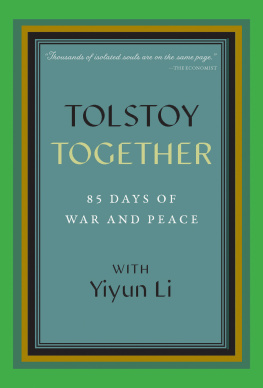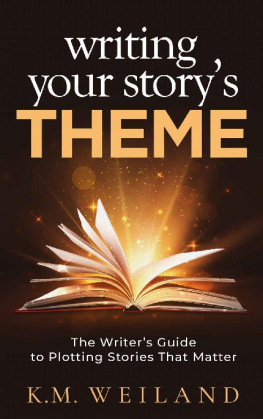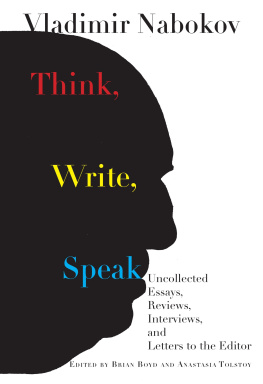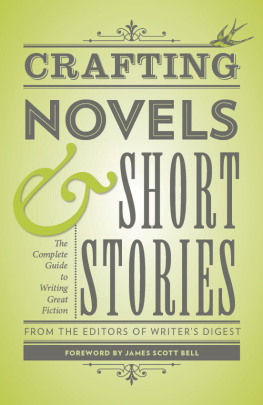Copyright 2016 by Narrative Tension, Inc.
All rights reserved.
Published in the United States by Random House, an imprint and division of Penguin Random House LLC, New York.
R ANDOM H OUSE and the H OUSE colophon are registered trademarks of Penguin Random House LLC.
Permissions acknowledgments can be found on .
Cohen, Richard.
How to write like Tolstoy / Richard Cohen.
1. FictionAuthorship. 2. FictionTechnique.
3. Authorship. I. Title.
PREFACE


PETER CAREY: I was finally a writer.
INTERVIEWER: What was it that was clicking?
CAREY: Age, experience, a simpler form, practice, reading, influence, getting beyond influence.
THE PARIS REVIEW , 2006
There are three rules for writing a novel. Unfortunately, no one knows what they are.
W. SOMERSET MAUGHAM (ATTRIB.)
A t a New Years Eve dinner party in Los Angeles, some time in the 1980s, the magician Ricky Jay was entertaining his fellow guests with elaborate tricks using a simple deck of cards when one of his codiners said, Come on, Ricky, why dont you do something truly amazing? After an awkward moment (for all the tricks had been amazing), Jay asked the guest to name a card. The three of hearts, the man replied. Jay shuffled the pack, gripped it in his right hand, then sprung it, cascading all fifty-two cards so that they flew the length of the dining table and pelted an open wine bottle.
What was your card again?
Three of hearts.
Look in the bottle.
The man did as bidden and found, curled inside the neck, the three of hearts.
A ny good magicians effects, his tricks of illusion or distraction, are akin, in at least the sense of amazement they induce, to what great writers do. Vladimir Nabokov once referred to the flawless magic of Tolstoys style. Take the scene in Anna Karenina where Konstantin Levin, a thirty-two-year-old landowner, proposes to Princess Ekaterina Kitty Alexandrovna Shcherbatskaya. Levin is a passionate yet shy aristocrat who, unlike his Moscow friends, lives in the country on his large estate. He actually proposes twice. On the first occasion, Kitty, just eighteen, clumsily turns him down, telling him that her marrying him is impossible. She believes she is in love with the handsome Count Alexei Vronsky and that he will soon propose to her. Vronsky regards his flirting with Kitty as mere sport and turns his attentions to Anna. Levin is crushed by Kittys refusal and returns to his estate, abandoning any hope of marriage and resolving to forget Kitty.
With his earnestness and soul-searching, his concern for equality and his committed life on a country estate, Levin shares many similarities with his creator (consciously so: In Russian, Levin means of Lev, and Lev is the spelling of Tolstoys first name). In some ways he is a bumbling figure, a little easy to mock, but our hearts go out to him, and we long for Kitty to change her mind, but cannot guess how it will come about after so much misunderstanding.
Eventually, a mutual cousin maneuvers the two of them so that they find themselves alone in a family drawing room. Kitty goes to a card-table, sits down, and taking a piece of chalk starts to draw circles on the green cloth. For a while neither of them speaks. Kittys eyes, Tolstoy tells us, shine with a gentle gleam. Levin leans over, takes the chalk from her and writes w, y, s, i, i, i, w, i, i, t, o, a.
These letters were the initials of the words, When you said, It is impossible, was it impossible then, or always?
It was highly unlikely that Kitty would be able to make out this complicated question. All the same, Levin looked at her as if his life depended on whether she could guess these words or not. She glanced back at him gravely, then resting her forehead on her hand tried to decipher it. Occasionally she would look up at him, asking him with her eyes: Is what I think right?
I know what it is, she said at last, blushing.
What is this word? he asked, pointing to the i of the word impossible.
That stands for impossible. But the word is not right.
He quickly rubbed out what he had written, gave the chalk to her, and stood up.
She wrote: t, I, c, n, a, d.
At once his face lit up; he had understood the reply: Then I could not answer differently.
He looked at Kitty timidly. Only then?
Yes.
Butbut now?
Read this. I will tell you what I wish, what I wish very much. She quickly traced the initials, t, y, m, f, a, f, w, t, p. This meant: That you might forgive and forget what took place.
He seized the chalk with trembling fingers, and crushing it wrote down the initials of the words: I have nothing to forgive and forget. I have never ceased to love you.
Kitty looked at him, and her smile died away.
I understand, she said in a low voice.
I first read this scene when I was twenty, have re-read it many times since, and still wonder at its effect on me. How could a combination of words on a pagetranslated wordsso take over my inner world? How had Tolstoy created an encounter that enraptured me, making me feel for these two make-believe characters so strongly (and, indeed, miss supper in college hall as a result)? Later, I discovered that the chalk game was a retelling of Tolstoys real-life proposal to Sonia Behrs, just as the scene in which Levin insists on showing his future wife the diaries recounting his youthful debaucheries also came straight from the authors own experiences. How had Tolstoy taken such intimate events and spun them into fiction?
This is what the current book attempts to pin down, with a deck that spans a lifetime of reading. Who cares for you? cries Alice, about to step out of her Wonderland. Youre nothing but a pack of cards! Only we do come to care, and that is where the magic comes in. Of course a novelist is not just performing a trick; he is creating a whole world that takes in themes, character, argument, cultural contexts, and much else besides. But do not forget that sense of magic and wonder: the secret in the bottle.

